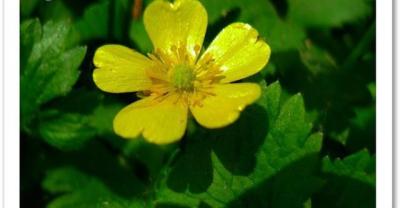High-yielding planting techniques of Rabdosia paniculata
High-yielding planting techniques of Rabdosia paniculata
Cat's claw grass, also known as Ranunculus, is a plant of Ranunculaceae. Mainly produced in Anhui, Jiangsu, Zhejiang, Henan, Guangxi, Taiwan and other provinces, widely distributed in the middle and lower reaches of the Yangtze River provinces. It has the function of detoxification and dispersing knots. It mainly treats diseases such as pharyngitis, tuberculosis of lymph nodes, pharyngitis, malaria, etc. In recent years, the clinical use of cat claw grass in traditional Chinese medicine has achieved remarkable results in the prevention and treatment of cancer, and it has become one of the three key developed medicinal materials in the country; its value and dosage have doubled day by day, and it is far from being able to meet the needs of the society by digging wild cat claw grass alone. artificial cultivation of cat claw grass is imminent. In order to popularize the artificial cultivation technology of cat claw and meet the growing social demand, the biological characteristics and artificial planting techniques of cat claw are introduced as follows.

1 biological characteristics
Cat claw likes warm climate and humid, semi-shaded environment. It has strong adaptability and is mostly wild on the edge of paddy field, ridge and wet grass. Slightly resistant to the cold, the underground piece of root open land can survive the winter. It is resistant to barren and lax in soil requirements. However, it is better to cultivate sandy loam or humus loam with deep, loose, fertile and well-drained soil.
2 methods of reproduction
Root propagation is the main method, and seed propagation is also possible.
2.1 the annual cat claw grass is propagated with 2.1 roots, and there are more than 10 tuberous roots in the ground. Can be harvested in spring and autumn, dig up the root, the large to provide commodities, small reserved for seed use. The method of raising seedlings first and then transplanting was used to expand the propagation coefficient.
Before raising seedlings, first prepare the seedbed, apply sufficient base fertilizer, fine rake flat. Then dig holes on the border surface according to row spacing 10-15cm, plant spacing 5cm, hole depth 3cm, to carry out on-demand. Before sowing, soak the selected roots in 5-10 μ l / ml gibberellin solution for 24 hours, remove the rinse solution, mix it with 3-5 times clean and moist fine river sand, and store it in the wooden box for about 20 days. When sowing, sift out the seed roots, divide them into two levels according to size, and sow seeds respectively. One seed root was sown in each hole. After sowing, cover fine and fertile soil with about 1cm, cover the border with grass, keep warm and moisturizing, in order to facilitate seedling emergence. Spring sowing takes place in late March, and seedlings emerge in about half a month when the temperature rises to 15-20 ℃, while autumn sowing occurs in the following spring from March to April in the first ten days of November. After emergence, the cover grass is removed and the management is strengthened. The seedlings can be transplanted when they grow 2-3 true leaves. Generally, 1 seed root can germinate 6-8 seedlings. Seedling 1hm2 can be planted in field 8-10hm2.
2.2 Seeds are propagated in May-June to collect ripe fruits, dry in the sun, thresh them, screen out the seeds, remove impurities, put them in cloth bags and store them in a cool and dry place for storage in autumn or spring. Sow in shallow trench according to row spacing of 10-15cm on the seedbed where sufficient fertilizer was applied. Because the seeds are small, when sowing, mix the seeds with fire and ash, spread them evenly into the ditch and cover the thin soil so that you can't see the seeds. Watering after sowing, covering the border with grass, keeping warm and moisturizing to facilitate seedling emergence. After emergence, the cover grass was removed in time, and the grass was removed in the middle tillage, interseedling and topdressing, and finally planted with 5-7cm plant spacing. Spring sowing in the autumn of that year, autumn sowing in the following spring transplanting.
3 planting techniques
3.1 Land preparation should choose barren slopes or flat land with deep soil layer, loose fertility and rich humus. Nursery land should choose loose, fertile, well-drained humus loam or sandy soil, flat land with irrigation conditions. After applying sufficient base fertilizer, leveling and ploughing fine into a high border with wide 130cm, the border ditch is wide 33cm, and the drainage ditch is arranged all around.
3.2 transplanting from March to April in spring, when the seedlings grow 2-3 true leaves, it will take place on a cloudy day or a sunny day after rain. On the finished border surface, the holes were dug and transplanted according to the row spacing of 15-20cm and the plant spacing of 10cm. Before planting, dig up the seedlings, carefully break off the roots with your hands, plant 1 plant in each hole, cover the soil and press it after planting, and pour through the fixed root water. Cover the border with grass for shade to prevent direct sunlight and affect survival. After the seedlings survived, the cover grass was removed and field management was carried out. Transplanting in autumn and winter, before the soil freezes.
3.3 Field management
3.3.1 Intertillage weeding is carried out after the first intertillage weeding in early spring, the soil should be loosened shallowly, and weeds should be removed by hand to avoid root damage. The plants were weeded for the second time before bolting and flowering in March, the third time before summer in early May, the fourth in early September and the fifth in November. Because the cat claw grass plant is short, the growth is exuberant in early spring, and the growth is slow in autumn and winter, so weeds should be eliminated to avoid grass shortage.
3.3.2 topdressing cat claw grass grows rapidly in early spring, after the first ploughing and weeding, light human and animal feces and urine 22500kg are added per hm2 to facilitate the growth of seedlings, the second time before flowering in March, one time before flowering, the third time after summer in September, and once more phosphorus and potassium fertilizer in November-December to benefit the root into winter.
3.3.3 drainage and irrigation after the seedlings are ready in early spring, water should be watered frequently to keep the field moist, which is beneficial to the growth of seedlings. Pay attention to drainage in the rainy season to avoid stagnant water causing rotten roots.
3.3.4 picking scape before bolting and flowering in late March, except for seed, all scape is removed, so that nutrients are concentrated in underground root growth, which is beneficial to yield increase.
3.3.5 the intercropping cat claw plant has a dormant period from early May to late September. During this period, edamame beans, vegetables or claw fruits or other medicinal materials with a short growing period can be intercropped between rows. It can not only shade the cat claw grass, but also make full use of the land and increase the income.
3.4 after harvesting and processing root propagation and planting, it will grow for 1 year, and the seeds will propagate and grow for 2-3 years. It can be harvested in four seasons in a year, but the suitable period is early May in spring and November in winter. When digging, carefully dig up the whole plant, cut off the stem and fibrous root, break off the root, wash the soil, and dry it to become a commodity.
Output and quality are generally about 2250kg per hm2, and the quality is better if the color is yellow and brown and the texture is solid and full.
- Prev

Planting method of potted lettuce
Lettuce is a kind of leafy lettuce that many people like to eat. it has two categories: red lettuce and green lettuce, the red color is as red as blood, and the green is attractive. Let's go.
- Next

High-yield planting techniques of eggplant!
1. The introduction of good varieties is a prerequisite for obtaining higher economic benefits, and the selection of improved varieties is an economical and effective means to prevent diseases and control pests. It is more suitable for me at the moment.
Related
- Fuxing push coffee new agricultural production and marketing class: lack of small-scale processing plants
- Jujube rice field leisure farm deep ploughing Yilan for five years to create a space for organic food and play
- Nongyu Farm-A trial of organic papaya for brave women with advanced technology
- Four points for attention in the prevention and control of diseases and insect pests of edible fungi
- How to add nutrient solution to Edible Fungi
- Is there any good way to control edible fungus mites?
- Open Inoculation Technology of Edible Fungi
- Is there any clever way to use fertilizer for edible fungus in winter?
- What agents are used to kill the pathogens of edible fungi in the mushroom shed?
- Rapid drying of Edible Fungi

